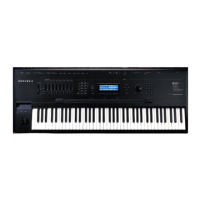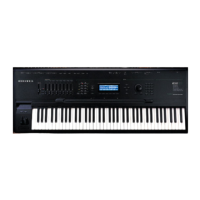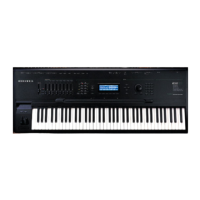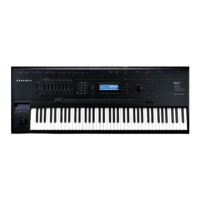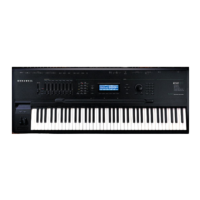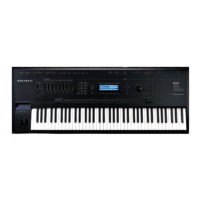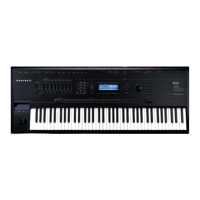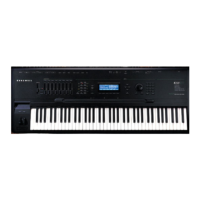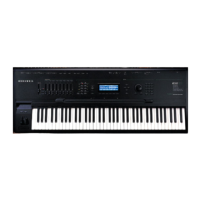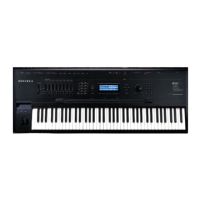Disk Mode
Creating Directories
13-11
ALTO|||||||||(dir)|||||
BOOBAMS||.KRZ*||||.5K||
CYMBALS||||||(dir)|||||
DOGS|||||.KRZ||||122K||
DOORS||||.KRZ*||3456K||
E4PROG|||.KRZ|||||10K||
Creating Directories
As stated above, you can create directories for organizing your K2500 files, whether you are
using SCSI or Floppy disks. No reformatting is necessary to add directories to disks that were
formatted with a K2000.
Directories appear in the normal file list with the indicator "(dir)" to the right of the
directory name.
There are two ways to create new directories.
First, the NewDir button can be pressed directly from the Disk Mode page, or second, a new
directory can be created and entered in one step during the Save operation, by pressing Save
then NewDir.
Creating a Directory with NewDir
When you press NewDir, you will first name the directory that you are about to make, for
instance:
||||||||||||||||||||||||||||||||||||||||
||||||||||||||||||||||||||||||||||||||||
||||||||||||||||||||||||||||||||||||||||
Directory|name:|THINGS||||||||||||||||||
||||||||||||||||||||||||||||||||||||||||
||||||||||||||||||||||||||||||||||||||||
||||||||||||||||||||||||||||||||||||||||
Delete|Insert|>>End||Choose||OK|||Cancel
Pressing >>End will take the cursor to the last character in the name. The Choose button
allows you to grab a file name from the current disk (this is discussed later, in the section titled
"Saving Files".) Otherwise, the name will default to either "NEWFILE" after a power-up, or the
name will be that of the most recent file saved or loaded. Once you choose a name to start with
(or the default), you can edit the name using the left and right cursor buttons, the Delete and
Insert soft buttons, and the >>End soft button.
After you have chosen the directory name and pressed OK, you have the choice of where (in
what directory) to put the new directory you are creating.
||||||||||||||||||||||||||||||||||||||||
||||||||||||||||||||||||||||||||||||||||
||||||||||||||||||||||||||||||||||||||||
Use|current|directory|for|THINGS?|||||||
(Path|=|\)||||||||||||||||||||||||||||||
||||||||||||||||||||||||||||||||||||||||
||||||||||||||||||||||||||||||||||||||||
|||||||||||||||||||||Change||OK|||Cancel
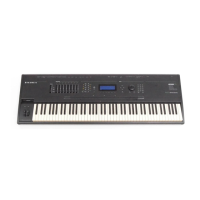
